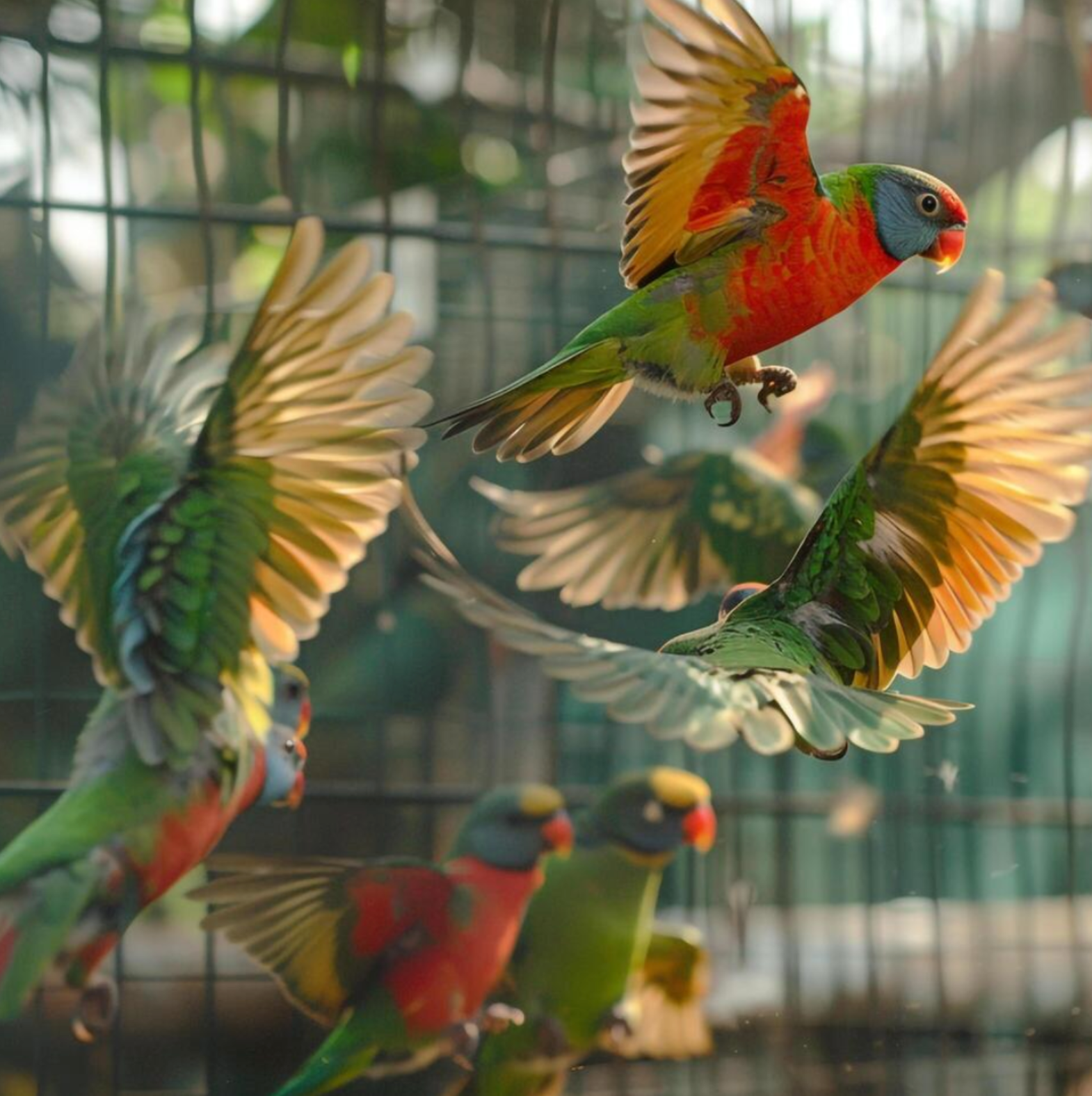Exotic Aviary Birds: A Care Guide

Exotic Aviary Birds: A Care Guide
SUMMARY
Learn how to care for exotic aviary birds with this comprehensive guide. From habitat setup and diet to socialization and enrichment, discover the best practices for keeping exotic birds healthy, happy, and thriving in a well-maintained aviary.
FEATURES
- Choosing Exotic Aviary Birds: Discover the best species for aviary setups.
- Creating the Perfect Aviary: Design a spacious and natural enclosure.
- Temperature and Humidity Control: Maintain a climate-appropriate environment.
- Proper Nutrition for Exotic Birds: Learn about species-specific dietary needs.
- Socialization and Flock Dynamics: Ensure a harmonious bird community.
- Enrichment and Mental Stimulation: Provide toys, foraging activities, and natural perches.
- Health and Disease Prevention: Monitor signs of illness and maintain hygiene.
- Breeding and Nesting Considerations: Understand the basics of breeding exotic aviary birds.
DESCRIPTION
Caring for exotic aviary birds requires careful planning, as these birds often have specialized needs that differ from smaller pet birds. With the right habitat, diet, and enrichment, an aviary can become a thriving environment for exotic species, allowing them to display natural behaviors and live fulfilling lives.
Choosing exotic aviary birds involves selecting species that are well-suited to a shared environment. Popular aviary birds include Gouldian finches, lorikeets, turacos, quail, and exotic parakeets. Understanding the unique care requirements of each species ensures compatibility and reduces stress in a mixed aviary.
Creating the perfect aviary means providing ample space, natural foliage, and secure perches. Outdoor aviaries should be weatherproof, with mesh walls that offer protection from predators while allowing for fresh air and sunlight. Indoor aviaries should be spacious, well-ventilated, and free from drafts. Both setups benefit from the inclusion of plants, branches, and water features to mimic a bird’s natural habitat.
Temperature and humidity control is essential for exotic birds, especially tropical species that require warm, humid environments. Monitoring temperature fluctuations and using heaters or humidifiers when necessary prevents health issues caused by cold or dry air.
Proper nutrition for exotic birds varies depending on the species. While some thrive on high-quality pellets and seeds, others require specialized diets. Lorikeets, for example, need a nectar-based diet, while turacos benefit from fruit-heavy meals. Providing a balanced mix of fresh produce, natural supplements, and clean water ensures long-term health.
Socialization and flock dynamics play a crucial role in keeping aviary birds happy. Some species, like finches and parakeets, are highly social and thrive in groups, while others may be territorial. Observing interactions and ensuring that birds have enough space to avoid conflicts helps maintain harmony in the aviary.
Enrichment and mental stimulation prevent boredom and promote natural behaviors. Hanging fresh branches for chewing, setting up foraging stations with hidden treats, and rotating toys keep birds engaged. Flight space is essential for aviary birds, so designing the enclosure to allow free movement enhances their well-being.
Health and disease prevention require regular monitoring. Signs of illness, such as feather plucking, lethargy, or changes in appetite, should be addressed immediately. Routine cleaning, fresh water supplies, and proper quarantine procedures for new birds help maintain a healthy aviary.
Breeding and nesting considerations are important for bird owners interested in raising exotic aviary birds. Providing proper nesting boxes, monitoring pair interactions, and ensuring a nutritionally rich diet support successful breeding. However, understanding species-specific breeding behaviors and population control is essential for responsible aviary management.
By following these care guidelines—choosing compatible species, maintaining a natural and spacious environment, and ensuring proper nutrition and enrichment—you can create a thriving aviary for exotic birds. With the right setup, your aviary birds will enjoy a fulfilling and naturalistic life, bringing beauty and vibrancy to their surroundings.
- sri palani

Comments 0